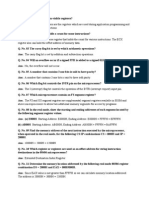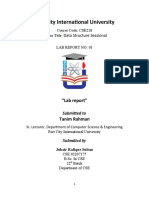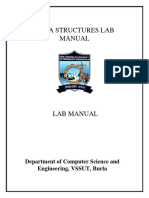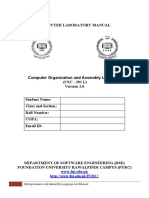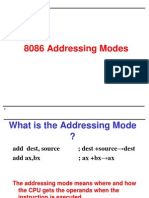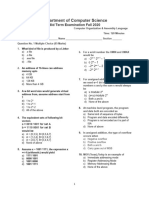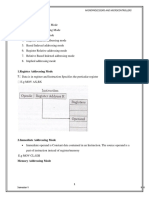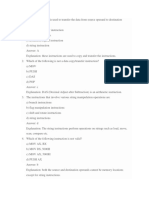100% found this document useful (2 votes)
640 views3 pagesProcessor
The document contains explanations of various x86 assembly instructions related to pushing and popping registers onto and from the stack. It defines instructions like PUSHA, PUSHAD, PUSH, POP, LDS, and REP and describes what registers they affect and how they manipulate the stack pointer and values. Key details provided include that CS cannot be the destination of MOV, PUSHA pushes registers in order of AX, CX, DX, BX, SP, BP, SI, DI, and PUSHAD pushes 32-bit registers EAX, ECX, EDX, EBX, ESP, EBP, ESI, EDI.
Uploaded by
Abdo MohamedCopyright
© © All Rights Reserved
We take content rights seriously. If you suspect this is your content, claim it here.
Available Formats
Download as PDF, TXT or read online on Scribd
100% found this document useful (2 votes)
640 views3 pagesProcessor
The document contains explanations of various x86 assembly instructions related to pushing and popping registers onto and from the stack. It defines instructions like PUSHA, PUSHAD, PUSH, POP, LDS, and REP and describes what registers they affect and how they manipulate the stack pointer and values. Key details provided include that CS cannot be the destination of MOV, PUSHA pushes registers in order of AX, CX, DX, BX, SP, BP, SI, DI, and PUSHAD pushes 32-bit registers EAX, ECX, EDX, EBX, ESP, EBP, ESI, EDI.
Uploaded by
Abdo MohamedCopyright
© © All Rights Reserved
We take content rights seriously. If you suspect this is your content, claim it here.
Available Formats
Download as PDF, TXT or read online on Scribd
/ 3





